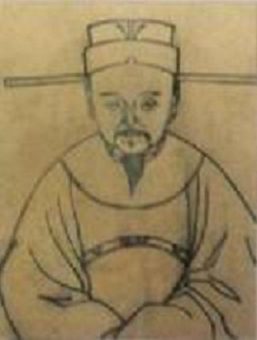Unit 14
Text
凡(fán) 訓(xùn) 蒙(méng),須(xū) 講(jiǎng) 究(jiū),
詳(xiáng) 訓(xùn) 詁(gǔ),名(míng) 句(jù) 讀(dòu)。
為(wéi) 學(xué) 者(zhě),必(bì) 有(yǒu) 初(chū),
小(xiǎo) 學(xué) 終(zhōng),至(zhì) 四(sì) 書(shū)。
Vocabulary
(1) 凡(fán):when it comes to, speaking of
(2) 訓(xùn):teaching
(3) 蒙(méng):children who begin to study
(4) 須(xū):must
(5) 講究(jiǎng jiū):explaining and inquiring, here referring to teaching methods
(6) 詳(xiáng):understand
(7) 訓詁(xùn gǔ):explain words’ meanings
(8) 句讀(jù dòu):sentences and phrases (Ancient books had no punctuation symbols. In reading, pauses occurred when there were sentences of complete meanings; those with short pauses were incomplete and called phrases.)
(9) 為學(wéi xué):study for knowledge;為(wéi) doing
(10) 者(zhě):a learner, a person seeking knowledge
(11) 初(chū):beginning (literal meaning), fundamental (figurative)
(12) 小學(xiǎo xué):learning basics, referring to knowledge of word glyph, pronunciation, and meaning
(13) 終(zhōng):complete, terminate
(14) 四書(sì shū):Four Books, including The Analects of Confucius, The Mencius, The Great Learning, and The Doctrine of the Mean. In the late Southern Song Dynasty, Zhu Xi gathered these books and named them the Four Books.
Text Explanation
When teaching children who begin to study, methods of explanation and inquisition are required. The teacher should explain explicitly the meaning of each word and how to read sentences and phrases. Those who study to increase knowledge must first acquire these fundamentals. After they learn the basics, such as word glyph, pronunciation, and meaning, they can further advance by studying the Four Books.
Discussion Questions
1. The study of Chinese sentences and phrases is important. How do you think it may affect your understanding of Chinese classics?
2. Do you like to study Chinese characters? Which part do you like most? Which is the most difficult?
Story
Chinese Writing
Chinese writing is the most interesting and beautiful in the world. Each character and syllable has its own shape, sound, and meaning. Each stroke is embedded in a story
As long as you can understand the initial word-formation principle, you can learn a word’s origin and story, and easily acquire a photographic memory.
Each Chinese character’s glyph often reflects the meaning of how the word was first created. It is the word’s “original meaning,” from which related meanings are then derived, called the “derivative meaning.” We may learn a word from its radical, that is, the character glyph, to understand its meaning and pronunciation. Most character radicals are writing symbols which tell the meaning of a word. Words of identical lateral parts may be pronounced alike. But words can change in meaning over time. Therefore, we need to examine closely each sentence in an article to truly understand the essence of the article.
Now let’s use the radical 日 (“ri”, sun) as an example. The word 日 has the sun’s shape inscribed on animal bones and tortoise shells. Its original meaning is “the sun.” Thus words with the radical 日 are mostly concerned with the sun.
For example, the word 旦 (“dan”, the beginning of a day) has the part 一 (“yi”, one), which indicates the ground. The word says that in the morning the sun is rising on the horizon. Also, at the bottom of the word 是 (“shi”) is 正 (“zheng”), this means moving forward correctly without deflection. 日 in the ancient mind is the correct model, so the word 是 originally means being positive and straight, and later expands to indicate “correctness.” Phrases such as 是非 (right and wrong), 一無是處 (has no merit to speak of), 實事求是 (tell as it is) all demonstrate 是’s derived meaning.
In addition, because the ancient books are without punctuation marks, the first lesson is to teach students how to punctuate to identify sentences and phrases. Not until students have acquired such knowledge can a teacher move on to an advanced level. The punctuation mark is an integral part of an essay. Used appropriately, it helps to convey the meaning of a sentence or phrase. The meaning of a sentence can be changed when a punctuation mark is added or moved.
Here is a story which explains the importance of the punctuation mark.
A man was traveling but because of the rain, en route he lodged at his friend’s place. After a long period of time, his friend became impatient and wanted his friend to leave, but was too embarrassed to tell him.
So he left a note, saying 下雨天留客天天留我不留, “The rainy day keeps a guest which I do not want to keep,” hoping that his guest would take the hint and leave.
But the guest, knowing his friend’s intention, decided to crack a joke.
He put punctuation marks in the note that made it read: 下雨天,留客天,天留我不?留!; that is, “The rainy day, the day to keep a guest. The day keeps me not? Keeps!”
The friend was very angry, but did not know what to do about it.
Writing Reflection
1. Look for some words of the same character radicals and check their relations.
2. Chinese words are composed of smaller parts. Words with the same parts may be different because their parts are placed in different positions within the words. Examine the following words and try to change them into different words.
(1) 杏→______(呆)
(2) 含→______(吟)
(3) 細→______(累)
(4) 架→______(枷)
(5) 紋→______(紊)
(6) 吧→______(邑)
(7) 忘→______(忙)
(8) 棘→______(棗)
(9) 椎→______(集)
(10) 暉→______(暈)
3. If there were no punctuation marks, would there be miscommunication? In addition to punctuation marks, what else can we use to make others understand our sentences and phrases?
Pages: 1 2 3 4 5 6 7 8 9 10 11 12 13 14 15 16 17 18 19 20 21 22 23 24



